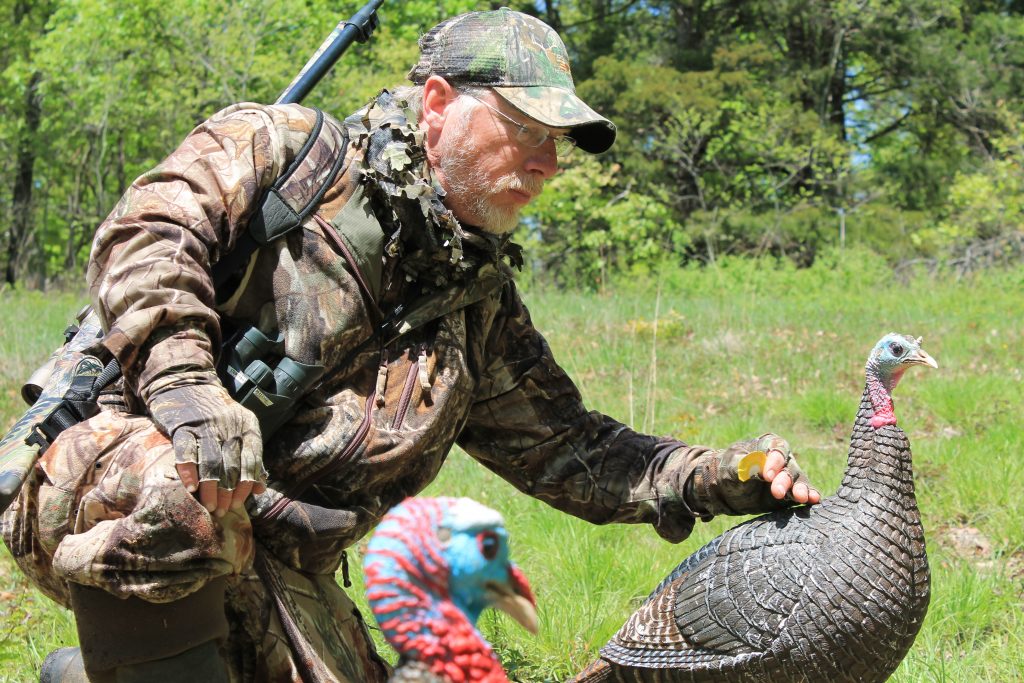Longbeards on Little Lands: Small-Property Turkey Hunting 101
How to hunt turkeys on small properties.
Most turkey hunters don’t have access to thousands of acres. Rather, it’s dozens or a couple hundred acres that they gain access to. Because of this, they are left with hunting longbeards on small properties.
But what is a small property? And how do you go about hunting it? For all intents and purposes, we’ll call a small property 50 acres or less. Here’s how to hunt it.
Find the Right Area
Locating the right general area is critical for those hunting smaller tracts. When you have less ground to roam, the quality of the land surrounding it becomes even more important. Being on a tract that connects to adjacent tracts with a lot of good turkey ground and turkey numbers is crucial.
Manage Land with Purpose
Smaller tracts of land must see an increase in efficiency. For land managers, this means utilizing every acre for something productive. This means it needs to serve a roosting, feeding, nesting, loafing or other habitat need for wild turkeys.
Plant Unique Food Sources
Those planting food plots for turkeys should offer the staples, such as clover, chufa and wheat. But don’t forget other crops that are more unique that turkeys likely won’t get on neighboring tracts. Plant unique food sources that turkeys love and that grow well in your area.
Promote Good Roost Trees
Some trees are better roost sites than others (learn more on roost sites here). When you find ones that check the right boxes, and that turkeys use, do what you can to promote these. Remove other trees that might be competing for resources, or clean up limbs that might prevent turkeys from flying up to a good roost limb.
Know Exactly What the Turkeys Do
A prepared hunter has a good idea of what the turkeys are going to do, when they are going to do it and how they are going to do so. By implementing land management practices and scouting aplenty, hunters can know what turkeys are going to do and set up accordingly.
Establish Ground Blinds
Those who establish good hunting spots on their small properties should create long-term blinds. These are areas that produce each year and that have a high probability of success. Positioning these long-term blinds helps turkeys to get familiar with them (even though that isn’t as necessary as when hunting deer).
Hunt Later in the Day
If turkeys aren’t roosting on the property, there’s a chance they are feeding or loafing on it during the middle two-thirds of the day. And even if they are roosting there, it might be difficult to get into position without alerting birds. In either instance, consider hunting later in the day if it is allowed in your state.
Use Good Entry Routes
Always take good entry routes into a property. This is true for anywhere you hunt, but especially on small tracts where you can’t afford to bump birds. Oftentimes, if you do, they’re onto the next property within seconds.
Choose Setups Wisely
Setting up is an important aspect of turkey hunting, but especially on smaller tracts. Being in just the right spot is even more important when you hunt smaller pieces of land.
Move Slower
As mentioned, spooking turkeys is even more important to avoid on smaller tracts. Because if you do spook birds, the hunt is more likely to be over, rather than on larger properties where you can relocate and get back on birds.
Be Passive, Sit Longer
Another common thread with successfully hunting smaller tracts is sitting longer. Patience is good regardless of the property size, but it almost becomes a requirement for those hunting smaller lands. Again, if you bungle the hunt, it’s likely over for the day, if not longer.
Call with Efficiency
When calling, be efficient. Don’t over-call. Sound realistic. Think about the calling vocalization you emit before sending it.
Be Deliberate with Decoys

Be very deliberate with decoys. Place them in exactly the right spot for visualization, but in an area where turkeys won’t hang up. Also, use the exact turkey decoy combination that best fits the scenario.
Use Good Exit Strategies
Once the hunt is over, take exit routes that don’t alert turkeys. Use exit strategies minimize human impact. This will help preserve the quality of future hunts.
Don’t Hunt Too Often
Overhunting a property can happen quickly, even with turkeys. Make sure to hunt a property no more than it can handle without decreasing the quality of its turkey hunting.
